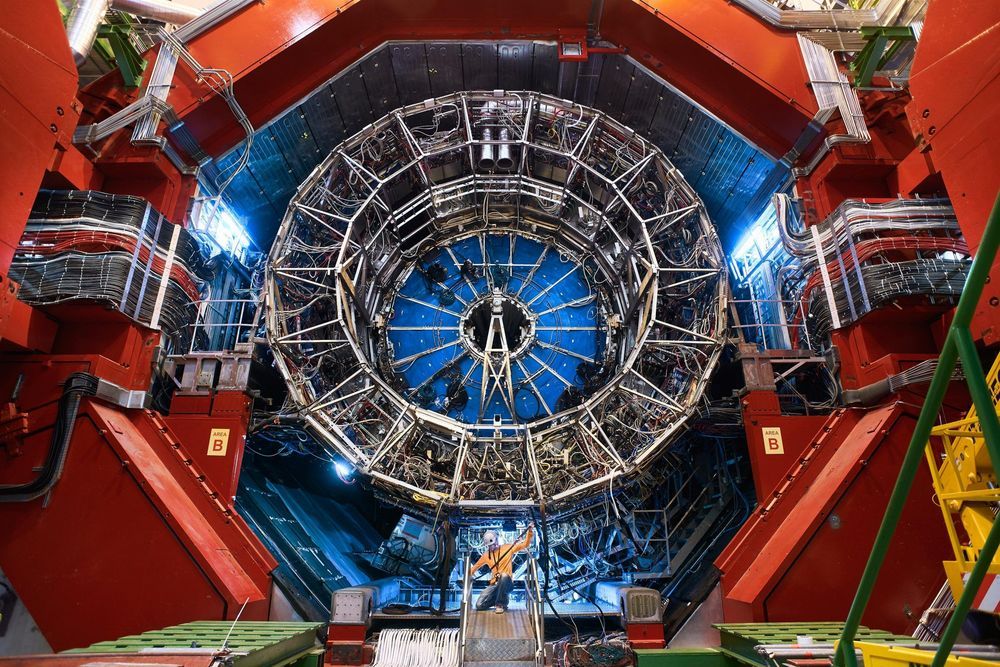Asked by: Adam King, Huddersfield.



The ALICE collaboration has presented new results on the production rates of antideuterons based on data collected at the highest collision energy delivered so far at the Large Hadron Collider. The antideuteron is composed of an antiproton and an antineutron. The new measurements are important because the presence of antideuterons in space is a promising indirect signature of dark matter candidates. The results mark a step forward in the search for dark matter.




According to new research by SISSA, ICTP and INFN, black holes could be like holograms, in which all the information to produce a three-dimensional image is encoded in a two-dimensional surface. As affirmed by quantum theories, black holes could be incredibly complex, and concentrate an enormous amount of information in two dimensions, like the largest hard disks that exist in nature. This idea aligns with Einstein’s theory of relativity, which describes black holes as three dimensional, simple, spherical and smooth, as depicted in the first-ever image of a black hole that circulated in 2019. In short, black holes appear to be three dimensional, just like holograms. The study, which unites two discordant theories, has recently been published in Physical Review X.
The mystery of black holes
For scientists, black holes pose formidable theoretical challenges for many reasons. They are, for example, excellent representatives of the great difficulties of theoretical physics in uniting the principles of Einstein’s general theory of relativity with those of the quantum physics of gravity. According to the relativity, black holes are simple bodies without information. According to quantum physics, as claimed by Jacob Bekenstein and Stephen Hawking, they are the most complex existing systems because they are characterized by enormous entropy, which measures the complexity of a system, and consequently contain a lot of information.
Segway’s S-Pod makes WALL-E’s hoverchair a reality.
Credit: Segway
Chrysler Aerospace was already contracted for the Saturn 1 and 1B First Stage so in 1971
they proposed an alternate shuttle program, the SERV and MURP
SERV: the Single-stage Earth-orbital Reusable Vehicle had a 53 metric ton payload in a 7m x 18m payload bay
12 LH2/LOX aerospike engines were arranged around the rim of the base, covered by movable metal shields
Jet Engines, which were fired just prior to touchdown in order to slow the descent.
MURP, the Manned Upper-stage Reusable Payload
The MURP was based on the HL-10 lifting body (Six Million Dollar Man test Vehicle) and a Larger Versionone larger (the D-34) could carry up to ten passengers.
Extensive travel required! Applications are open for #Artemis explorers who will be journeying to the Moon, Mars and beyond.
Our latest astronaut class shares their journey to #BeAnAstronaut. Are you next? https://youtu.be/q5T9iYjt6Lk
From robots that flip burgers in California to ones that serve up bratwursts in Berlin, we are starting to see how machines can play sous-chef in kitchens around the world. But scientists at the University of Cambridge have been exploring how these culinary robots might not only do some of the heavy lifting but actually elevate the dining experience for the humans they serve, demonstrating some early success in a robot trained to cook omelettes.
The research project is a collaboration between the University of Cambridge researchers and domestic appliance company Beko, with the scientists setting out to take robotic cooking into new territory. Where robot chefs have been developed to prepare pizzas, pancakes and other items, the team was interested in how it might be possible to optimize the robot’s approach and produce a tastier meal based on human feedback.
“Cooking is a really interesting problem for roboticists, as humans can never be totally objective when it comes to food, so how do we as scientists assess whether the robot has done a good job?” says Dr Fumiya Iida from Cambridge’s Department of Engineering, who led the research.